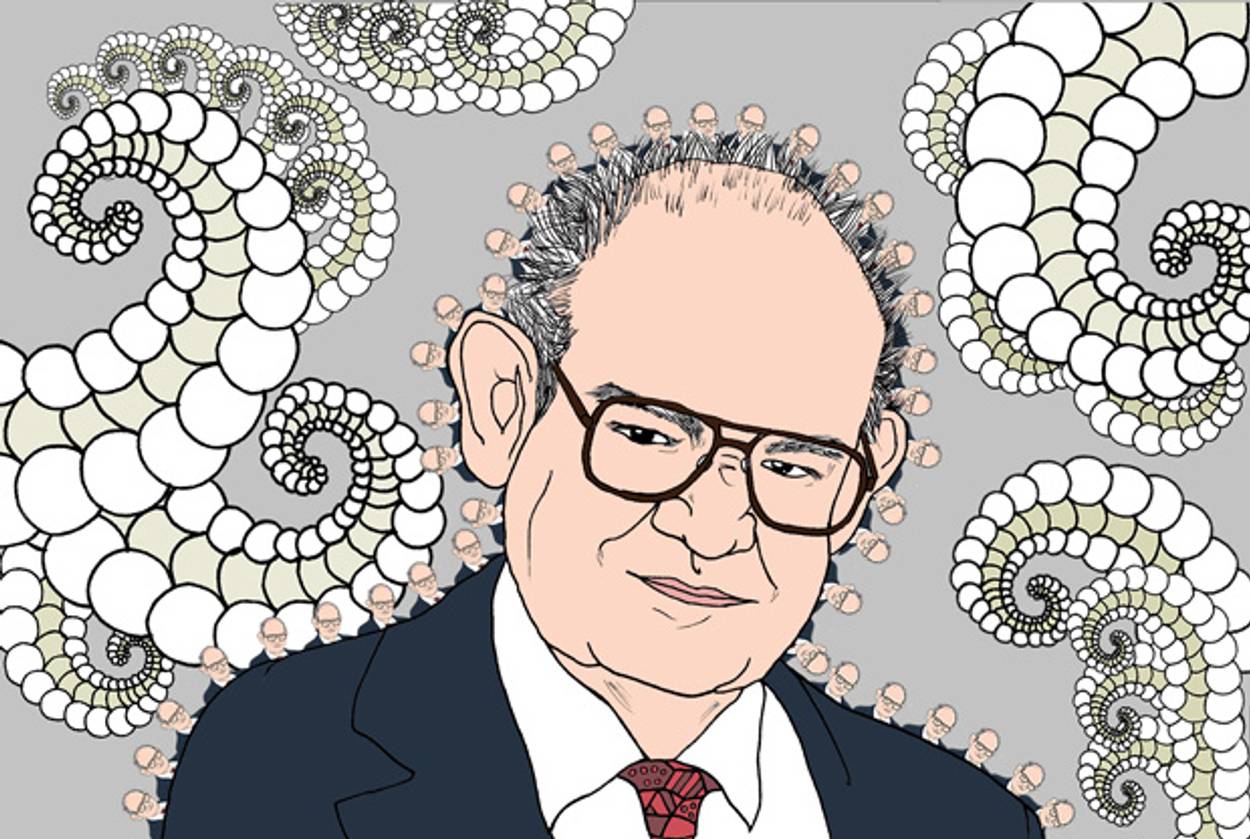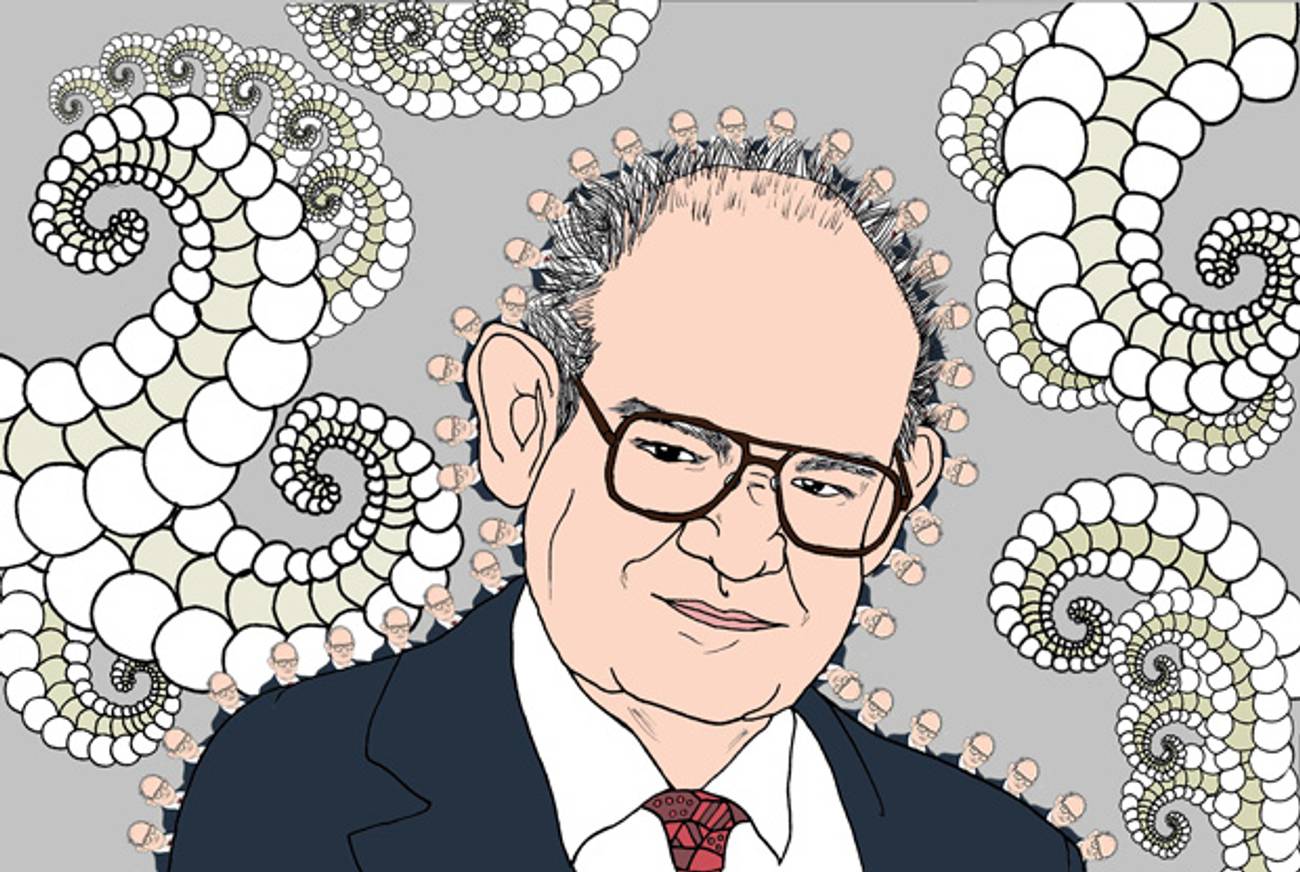A Math Genius’ Sad Calculus
Benoit Mandelbrot, the father of fractal geometry, pens a disturbing new memoir on mathematics—and survival




“Nearly all common patterns in nature are rough,” writes the mathematician Benoit Mandelbrot at the beginning of The Fractalist: Memoir of a Scientific Maverick published posthumously this month by Pantheon. “They have aspects that are exquisitely irregular and fragmented—not merely more elaborate than the marvelous ancient geometry of Euclid but of massively greater complexity.”
As Mandelbrot illustrates in his memoir, there are many rewards out there for an elite mathematician—university chairs, corporate research jobs, and conference junkets—but fame is not usually one of them. His uncle, Szolem Mandelbrojt, was a star of French mathematics in the 20th century, but he looked with suspicion on the kind of acclaim Benoit received when he published his 1975 book Fractals and its popular successor The Fractal Geometry of Nature in 1982. “There are 15 people in the world who read everything I write,” Szolem told his nephew. “That is enough. I find that very comforting.”
What made Benoit Mandelbrot something of a cult figure was the fact that his key discovery, fractal geometry, generates a weird kind of visual beauty. The set of mathematical objects known as the Mandelbrot set is produced using a formula that he describes as “very plain”: “Pick a constant c and let the original z be at the origin of the plane; replace z by z times z; add the constant c; repeat.” A graph of the set produces an image of fantastic complexity and strange magnificence. It exhibits the key property of a fractal, which is that it is self-similar—it repeats its own pattern on every scale.
This kind of pattern, Mandelbrot found, is common in nature and even in art. The illustrations in The Fractalist include an image of the human lung, a photograph of atmospheric turbulence on Jupiter, and Hokusai’s famous painting “The Great Wave”: All display the kind of regular irregularity that Mandelbrot taught the world to call fractal. (He came up with the name, he writes, after consulting his son’s Latin dictionary and finding the word fractus, “broken.”) More, his mathematical work had applications to a surprising range of fields: He made contributions to the study of linguistics, financial markets, geography, aeronautics, and cosmology, which were united by what Mandelbrot calls “roughness.” Or, as he put it in The Fractal Geometry of Nature, “Clouds are not spheres, mountains are not cones, coastlines are not circles, and bark is not smooth, nor does lightning travel in a straight line.”
Mandelbrot’s life work was to develop mathematical tools able to measure that kind of fiendishly difficult, real-world complexity. The challenge facing The Fractalist is that it is almost impossible for a non-mathematician to advance beyond these generalities and understand what precisely it is that Mandelbrot accomplished. Knowing this, he allows no mathematical formulas or notation in the book—the formula for the Mandelbrot set is the sole exception. It is clear enough, however, that the mathematics Mandelbrot worked with has nothing to do with the kind most of us learned in school; it is infinitely more creative and exciting. His own gift, he writes, was an intuitive ability to “see” complex shapes. As a student, he could solve difficult problems much faster than the rest of the class by turning equations into mental geometry: “In no time, searching for and studying symmetry became central to my work … hopelessly complicated problems of integral calculus could be ‘reduced’ to familiar shapes that made them easy to resolve.”
For this reviewer, reading The Fractalist is rather like reading about a poet who wrote in a foreign language for which no adequate translation is available. You know Mandelbrot is up to exciting things, but you have to take them mostly on faith. What he can share, and does copiously, are the steps of his worldly career: the professorial appointments, the job as a researcher at IBM, the papers published and colleagues courted and impressed. There is so much of this kind of thing in the second half of The Fractalist that it comes to read like an annotated CV, and it has the effect of making Mandelbrot seem very vain. But then, this is a man who decided early in life that he wanted to be a second Kepler, founding a new field of study and revolutionizing humanity’s picture of the world. (In his own view, he accomplished this: “In my Keplerian quest I faced many challenges. The good news is that I succeeded.”) All of this sits oddly with his later declaration that “a memoir is a lesson in humility.”
What makes The Fractalist compelling, even for a non-mathematician, is its first half, which describes Mandelbrot’s childhood and adolescence as a Jew in wartime Europe. The fact that he survived to adulthood is itself something of a miracle. He was born in Warsaw in 1924 and raised in a modernizing Jewish family where Polish was the language of choice. (He could not talk directly to his Yiddish-speaking grandfather, he recalls.) The Mandelbrot family’s roots were in Lithuania, where it was said to have produced “men of great learning, some even famous within Jewry.” That it went on to produce Szolem and Benoit lends support to the idea that the intellectual skills prized by traditional Jewish learning are the basis of modern Jewish achievement in secular fields.
The global depression combined with intense anti-Semitism made Poland during the 1920s and 1930s a very difficult place for Jews. Mandelbrot’s father, who had forsaken advanced schooling in order to become a garment dealer and support his family, emigrated to Paris in 1931, hoping to make a better living. Five years later, his family joined him—spurred, Mandelbrot writes, by the experience of a cousin who was denied admission to high school out of anti-Semitism. The decision was made just at the right time: If they had waited a few years, the Mandelbrots would have been trapped by the war and almost certainly would have died in the Holocaust, as did most of their Warsaw friends.
Life in France was not easy, either—the family was extremely poor and lived in a tenement in the Paris slum of Belleville. But Mandelbrot’s parents believed strongly in the promise of France, and especially in the meritocratic school system. By insisting that Benoit acculturate quickly—learning to speak French without an accent and get along in French society—they gave him skills that would be indispensable after the fall of France in 1940. The Mandelbrots fled Paris for the southern, unoccupied zone, where they survived in the small town of Tulle thanks to the help of friends of uncle Szolem’s. “Our constant fear,” Mandelbrot writes,”was that a sufficiently determined foe might report us to an authority and we would be sent to our deaths. … We escaped this fate. Who knows why?”
One reason why, he suggests, is that his academic brilliance won him special consideration. “Xenophobia lost, meritocracy won,” he writes, and this would become the motto of his French experience:
The chronicles of Eastern Europe included a growing number of stories in which a would-be “butcher” is oversupplied with potential victims and a person perceived to be special is somehow spared. Father must have felt it was very bad to be overly conspicuous, but very good to be seen as rare and special. This attitude, which he probably brought from Warsaw, created in me an elevated level of commitment and ambition.
Thus motivated, Mandelbrot advanced to excellent high schools and then, after the Liberation, to the École Polytechnique, one of the ultra-elite “grands écoles.” More than 60 years later, he still writes with pride about the score he received on his entry examination—the highest in France, not just in that year but possibly ever. From then on, he was more or less guaranteed a cushy career in French academia—though he ended up spending most of his adult life in the United States, drawn by the intellectual freedom offered by IBM’s pure research division.
This back story gives a certain pathos to Mandelbrot’s late-life boasting. Hannah Arendt wrote in The Origins of Totalitarianism about the plight of the “exception Jew”—the Jew who is recognized as an equal in European society, but only because of his exceptional achievements or charm, like Benjamin Disraeli. For Mandelbrot, his mathematical genius might literally have saved his life during the war years; it certainly raised him from the immigrant poverty in which he was born and introduced him to an international fraternity of elite scientists. But there is also something tragic about Mandelbrot’s conviction he felt that he had to be a genius simply in order to survive.
***
Like this article? Sign up for our Daily Digest to get Tablet Magazine’s new content in your inbox each morning.
Adam Kirsch is a poet and literary critic, whose books include The People and the Books: 18 Classics of Jewish Literature.
Adam Kirsch is a poet and literary critic, whose books include The People and the Books: 18 Classics of Jewish Literature.